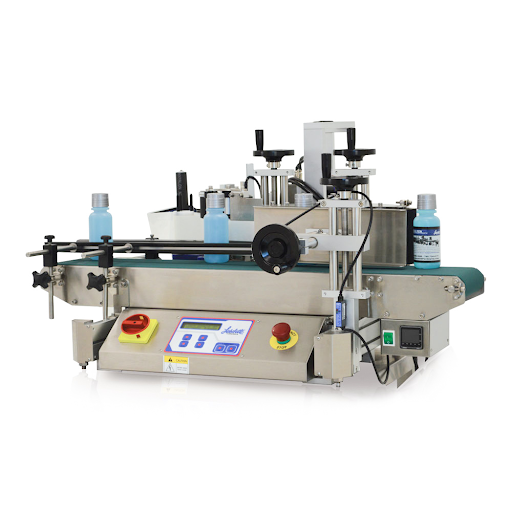In the fast-paced world of cosmetics, where innovation and branding reign supreme, the importance of packaging cannot be overstated. Labeling is a crucial aspect of this process, where a suitable labeling machine can make all the difference. Choosing the perfect Automatic Labeling Machine for your cosmetic company requires careful consideration of various factors to ensure efficiency, accuracy, and compliance.
In this blog, we’ll delve into a comprehensive checklist to guide cosmetic companies in selecting the ideal labeling machine for their needs.
1. Labeling Requirements
Cosmetic products often come in various shapes, sizes, and packaging materials, making flexibility crucial in the labeling process. A top consideration when choosing a labeling machine is its ability to accommodate diverse requirements. Whether it’s bottles, jars, tubes, or boxes, the labeling machine must easily handle different sizes and shapes of containers. Moreover, it should support various label materials, including paper, plastic, and film, to meet different cosmetic products’ aesthetic and functional needs.
2. Speed and Capacity
In the competitive cosmetics industry, speed is of the essence. The labeling machine’s production speed must align with the company’s demand to ensure timely delivery and meet customer expectations. Whether it’s high-volume production or small-batch runs, the machine should offer the necessary speed and capacity to keep up with the pace of operations.
Additionally, it should be equipped with features like automatic adjustment and quick changeover to minimize downtime and maximize productivity.
3. Accuracy and Precision
Maintaining brand integrity and compliance with regulatory standards requires precise label placement. The labeling machine must exhibit high accuracy and precision to ensure consistent positioning of labels on each product. Whether it’s front, back, wrap-around, or top labeling, the machine should deliver impeccable results, free from misalignment or wrinkles.
This enhances the product’s visual appeal and reinforces brand credibility and professionalism.
4. Versatility
Cosmetic companies often introduce new products or packaging designs to stay ahead of the market. Therefore, the labeling machine must be versatile enough to adapt to changing requirements without extensive reconfiguration or customization. It should accommodate different labeling surfaces, including flat, curved, or irregular shapes, to cater to the diverse range of cosmetic containers.
Versatility also extends to label orientation and application methods, allowing for customization based on product specifications and branding preferences.
5. Ease of Integration
Seamless integration with existing production lines is essential for maintaining workflow efficiency. To create a cohesive and synchronized operation, the labeling machine should be compatible with other packaging machinery, such as fillers, cappers, and sealers.
Easy integration minimizes setup time, reduces the risk of errors, and ensures smooth transitions between packaging stages. Additionally,Moreover, it facilitates centralized control and monitoring, enabling operators to oversee the production process from a single interface.
6. Ease of Operation
User-friendliness is paramount when selecting a labeling machine, as it directly impacts operator efficiency and training requirements. Intuitive controls, clear instructions, and ergonomic design contribute to ease of operation, enabling operators to perform tasks accurately and efficiently.
Quick changeover features, tool-less adjustments, and automated settings further streamline operation, allowing seamless transitions between labeling jobs. Additionally, the manufacturer’s comprehensive training and ongoing support enhance operator proficiency and minimize the risk of errors.
7. Maintenance Requirements
Like any machinery, labeling machines require regular maintenance to ensure optimal performance and longevity. Before selecting, consider the machine’s maintenance requirements, including preventive maintenance schedules, routine inspections, and lubrication procedures. Assess the accessibility of critical components for cleaning and servicing, as well as the availability of spare parts and technical support from the manufacturer.
By proactively addressing maintenance needs, cosmetic companies can minimize downtime, extend the machine’s lifespan, and maximize the return on investment.
8. Printing Capabilities
Many cosmetic products require variable data printing on their labels, such as batch numbers, expiration dates, or barcodes. The labeling machine should support a range of printing technologies, including inkjet, thermal transfer, or laser printing, to accommodate these requirements. It should offer seamless integration with printing systems, precise alignment with label placement, and high-quality printing output to ensure readability and compliance with regulatory standards.
Moreover, the machine should allow for customization of printed information based on product specifications and regulatory requirements.
9. Cost and ROI
While cost is a significant factor in the decision-making process, it’s essential to consider the overall return on investment (ROI) when selecting a labeling machine. Evaluate the initial purchase price, ongoing operational expenses, maintenance costs, and potential savings or revenue generation opportunities. A thorough cost-benefit analysis should account for increased productivity, reduced labor costs, improved product quality, and regulatory compliance. By weighing these considerations against the investment outlay, cosmetic companies can make informed decisions that align with their budgetary constraints and long-term business objectives.
10. Future Expansion and Upgrades
As cosmetic companies grow and evolve, their labeling needs may change over time. Therefore, choosing a labeling machine that offers scalability and flexibility to accommodate future expansion and upgrades is crucial. Consider factors such as modular design, compatibility with additional features or accessories, and software updates to ensure the machine can adapt to evolving requirements.
Moreover, assess the manufacturer’s track record of ongoing support, including upgrades, retrofitting options, and technical advancements, to future-proof your investment and stay competitive in the market.
Bottom Line
Selecting a suitable labeling machine is a strategic decision that can significantly impact a cosmetic company’s packaging operations and overall success. With a suitable labeling machine, they can streamline their packaging processes, enhance brand reputation, and seize opportunities for growth in the dynamic cosmetics industry.
In conclusion, investing in a suitable Automatic Labeling Machine is about meeting immediate needs and laying the foundation for future success and sustainability in the competitive cosmetics packaging world.


